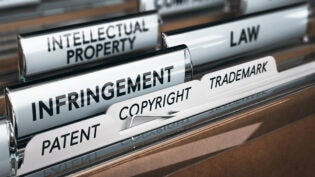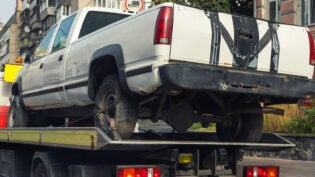What You Need to Know About Small Business & Bankruptcy
By: Ron Holland

The global pandemic struck businesses of all sizes and models. As consumers had to conserve their dollars for only the essentials, many corporations, especially small businesses took a severe hit. Nearly a year after the pandemic was first declared by President Donald Trump, many small businesses are treading water or starting to sink.
Rather than continue to pay out their loans or rent, some business owners are considering filing for bankruptcy to save their livelihood. The business bankruptcy process can be very confusing, and based on the size and value of your business and debt, you may have to file for a specific type of bankruptcy. If you’re unsure about whether to file for bankruptcy or what chapter to file under, reviewing the distinction of the 3 major types of business bankruptcy can help you to repay or eliminate your debt. But first, you should review your business structure, income, and debt amount – this will help you get a clear idea of which code to file.
3 Codes of Business Bankruptcy
The way that bankruptcy courts dictate how a business should file is based on the business’s structure. A sole proprietorship is a legal extension of the owner. This means the owner would need to file very similarly to an individual with Chapter 13. Rather than personal assets, the owner is responsible for all assets and liabilities of the firm.
If the business assets and liabilities are the responsibility of an LLC, corporation, or partnership, this is separate from the owner and the organization needs to file for bankruptcy. The owner can file one of two types of bankruptcy for their business: business protection under Chapter 7 or reorganization bankruptcy for businesses under Chapter 11.
Chapter 13 Bankruptcy for Sole Proprietors
Chapter 13 bankruptcy is known as a reorganization bankruptcy. This code of bankruptcy is usually reserved for individuals. With Chapter 13 bankruptcy, some of the debt is reduced, but most of the debt is placed on a repayment plan over the course of three to five years. This repayment amount is often based on how much the owner earns and how much the other owes.
If you file for Chapter 13, the debtor is acknowledging that they’re willing to repay the debt on time to avoid liquidation of assets. Since sole proprietorships are indistinguishable from their owners, this can be a preferred code of bankruptcy to avoid losing personal assets such as homes and cars. This form of bankruptcy also allows the owner to stay in business while they’re working to pay off the debt.
Chapter 7 Bankruptcy for Small Business Entities
For business entities that are “going out of business,” want to pay off their debts, and avoid any repayment then the liquidation bankruptcy, or Chapter 7 bankruptcy may be the way to file.
This code of bankruptcy can be applied to individuals and businesses. With Chapter 7 bankruptcy, debt is often so significant that repayment is not feasible. In order to qualify for this code of bankruptcy, the debtor must pass a “means test,” which is a review of the company’s income.
If the income is above a certain level, the case is dismissed and the debtor will likely have to file for a Chapter 11 bankruptcy (for a corporation) or Chapter 13 (for a sole proprietorship). If a Chapter 7 bankruptcy is approved, the business is dissolved, and the non-exempt property or assets are seized and placed under the responsibility of bankruptcy trustee to help pay off the debt.
Chapter 11 Bankruptcy for Small Business Entities
Chapter 11 business bankruptcy is a reorganization bankruptcy for business entities or sole proprietorships that disqualify for Chapter 13 bankruptcy due to their high income levels.
Chapter 11, like Chapter 13, allows the business to continue to running under a court-appointed trustee. When a company files Chapter 11, they provide a detailed plan of reorganization outlining how it will deal with its creditors including terminating contracts and leases, recovering assets, repaying a portion of its debts and discharging other debts until it returns to a profitable state. This plan is shown to creditors that vote on the outline and repayment. Finally, the court reviews the plan and approves of the plan if the court deems it fair and equitable.
The reorganization of Chapter 11 bankruptcy can be extremely complex, and the approval of a plan can take over a year. However, Chapter 11 can give business owners the opportunity to continue running their business, providing their customers with great service, and repaying their debt.
Which Bankruptcy Code is Right for Your Small Business?
Overall, the bankruptcy process can be complex and require a lot of insight into your business’ debt, income, and structure. Whether your small business debts are related to the Coronavirus pandemic or not, you deserve debt relief and bankruptcy assistance. Consulting with a licensed and experienced bankruptcy attorney can help you file under the right bankruptcy chapter for you and be an advocate for you and your business in the court.
2445 Views












